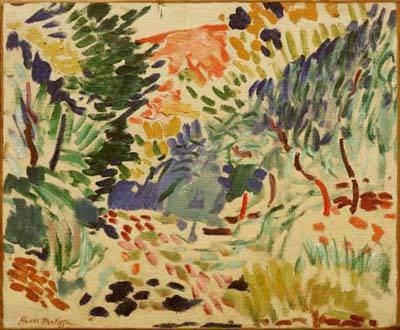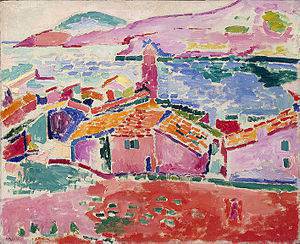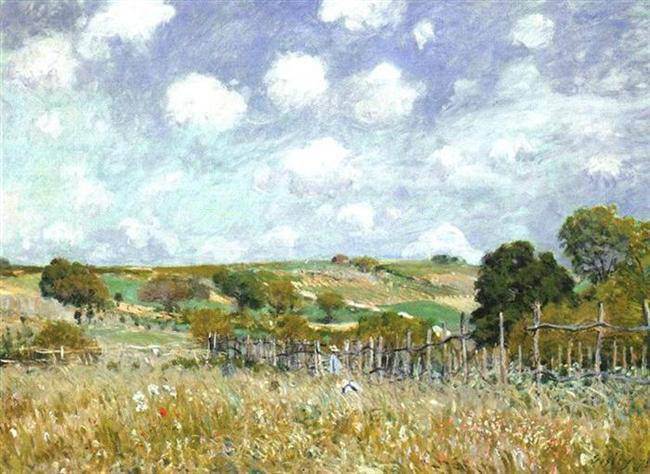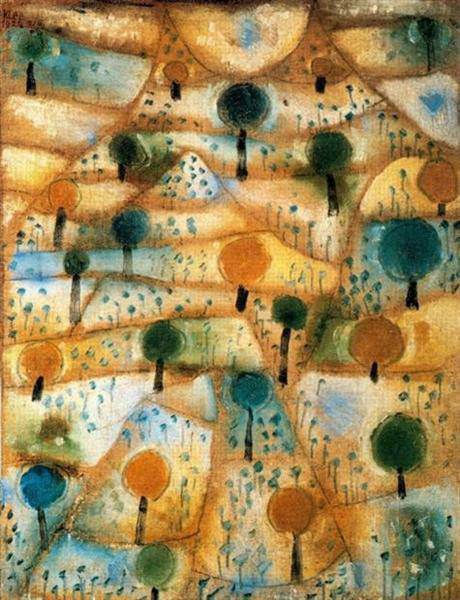Henri Matisse · Landscape at Collioure

Henri Matisse (France, 1869-1954), 1905. Oil on canvas, 38.8 x 46.6 cm (15 1/4 x 18 3/8 inches). New York, Museum of Modern Art (MOMA)
Henri Matisse is one of the most important painters of the early twentieth century. Alma mater of Fauvism, he was the creator of an expressive pictorial language based on the arbitrary use of color that influenced many of the major avant-gardes of the first half of the 20th century.
In 1904 Matisse met Paul Signac, and incorporated the pointillism language to his works, which is evident in paintings such as “Luxe, calme et volupte” (1904, Paris, Orsay). The following year, 1905, was a highpoint in Matisse’s career. In a group exhibition at the Salon d’Automne –an event considered to be the birth of Fauvism- Matisse showed a series of paintings in which the arbitrary use of color (colors that differ from the real ones, such as the green and yellow face of the woman in “Woman with a Hat”) caused a shock among the art critics.
“Landscape at Collioure” is halfway between the artist’s brief “pointillist period” and his more characteristic fauvist language. It depicts the Mediterranean landscape surrounding Collioure, a small coastal town in the Languedoc-Roussillon province, where Matisse had been established to work with his friend and rival André Derain. In other landscapes created in Collioure, such as “The open window”, Matisse used other elements to create a certain feeling of depth. But in this landscape there is nothing but patches of wild and uninhibited color, free and fully fauvist.
G. Fernández – theartwolf.com

Henri Matisse: “Les toits de Collioure” (1905)
Follow us on:


